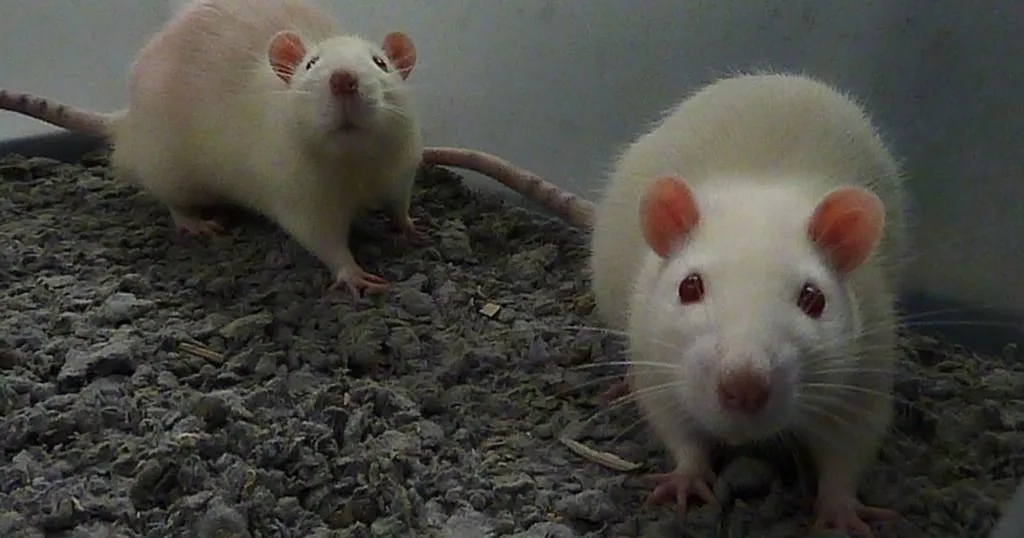How an internal clock gene can alter innate behaviors in mice
Some might argue that laboratory mice are not the same as wild mice, yet they remain capable of performing the innate, routine behaviors necessary to survive in natural environments, such as courtship and nest-building,
Posted by
Published on
Thu 24 Jul. 2014
Topics
| Circadian Rhythmicity | EthoVision XT | Mice | Sociability Test | Video Tracking |

Some might argue that laboratory mice are not the same as wild mice, yet they remain capable of performing the innate, routine behaviors necessary to survive in natural environments, such as courtship, nest-building, and exploratory activities. Still, their ‘non-natural’ (read: laboratory) environment may limit them in the expression of these behaviors.
Circadian rhythmicity
The internal circadian clock is of fundamental importance for animals to anticipate recurring events and ensuring basic behaviors, such as gathering food and building a nest, occur in time. One of the ways we influence the animal’s natural capacity to perform these and other innate behaviors is by altering the light/dark cycle in a laboratory setting.
Internal clock functioning
In addition to the external environment, proper functioning of the internal clock also depends on biological factors such as genes; specifically, the Per1 gene Bechstein et al. took a closer look at the role of the Per1 gene in cyclical behavior, and compared wild type (WT) laboratory mice with a Per1 knockout (KO) strain. They found that this gene plays an important role in the regulation of innate behaviors, such as nest building and courtship behavior.
Marble burying
When you place bedding and objects in a cage, mice will typically bury the objects. Bechstein and his colleagues used this test to investigate the differences in explorative behavior between the strains. Video tracking software EthoVision XT was used to analyze running, rearing, and digging behaviors during the 30-minute test period.
The Per1KO mice spent less time rearing and a longer latency to initiate digging behavior. There are several possible explanations for this: they may be less interested in the marbles or the new environment, less capable of interpreting the set-up as novel, or they could be more anxious. Since the Per1KO mice reportedly do not display more anxiety-like behaviors (Jilg et al., Hippocampus, 2010), problems in detecting a new environment as novel are compatible with the relative low amount of rearing behavior of the KO strain, which in turn relates to hippocampal defects associated with impaired exploration.
Vocalizations
More evidence for deficits in hippocampus-related behaviors in the KO strain was found in ultrasonic vocalization tests. When repeatedly exposed to females, WT males decreased the number of ultrasonic calls per day. The Per1 KO strain showed major impairments in this behavior habituation. It was also interesting to find that the minimal peak frequency of their ultrasonic vocalizations was lower and the structure of the calls differed between WT and the Per1 KO strain.
Sexual preference
This difference in vocalization may also cause a difference in ‘attractiveness’ of the male test subjects to WT female mice. To test this, the researchers used a sociability set-up. A WT type female mouse was placed in a three-chambered cage: the middle chamber was empty, while each of the outer chambers contained a mesh cage housing either a WT male or a Per1 KO male. Each session lasted 10 minutes and was recorded and analyzed with EthoVision XT.
Interestingly, the female WT mice spent more time exploring the cage areas of the Per1KO males. The authors speculate that this may be caused by the modulated ultrasonic vocalization frequency detected from the male KO mice; it could also be due to different call structure or scent. That females seem to favor the mutant over the WT mice might have an evolutionary reason: a higher genetic diversity of the offspring is a known principle for the elevation of fitness in a population.
Clock gene necessary for innate routine behavior
This and other studies show that WT mice are, when given the options to do so, quite capable of performing the innate routine behaviors of their ancestors, even though they have been in the lab for quite some years now. This study also suggests that the clock gene Per1 is important for exhibiting some of these innate behaviors.
Acknowledgement
I would like to thank authors Erik Maronde and Philipp Bechstein for their help writing this blog post. Read their publications at:
- Bechtstein, P.; Rehbach, N.-J.; Yuhasingham, G.; Schürmann, C.; Göpfert, M.; Kössl, M.; Maronde, E. (2014). The clock gene Period1 regulates innate routine behavior in mice. Proceedings of the Royal B Society, 281, 20140034.
Related Posts

Sunshine and romance: ultraviolet light enhances sexual behavior

Towards automated homecage monitoring of group housed rats

